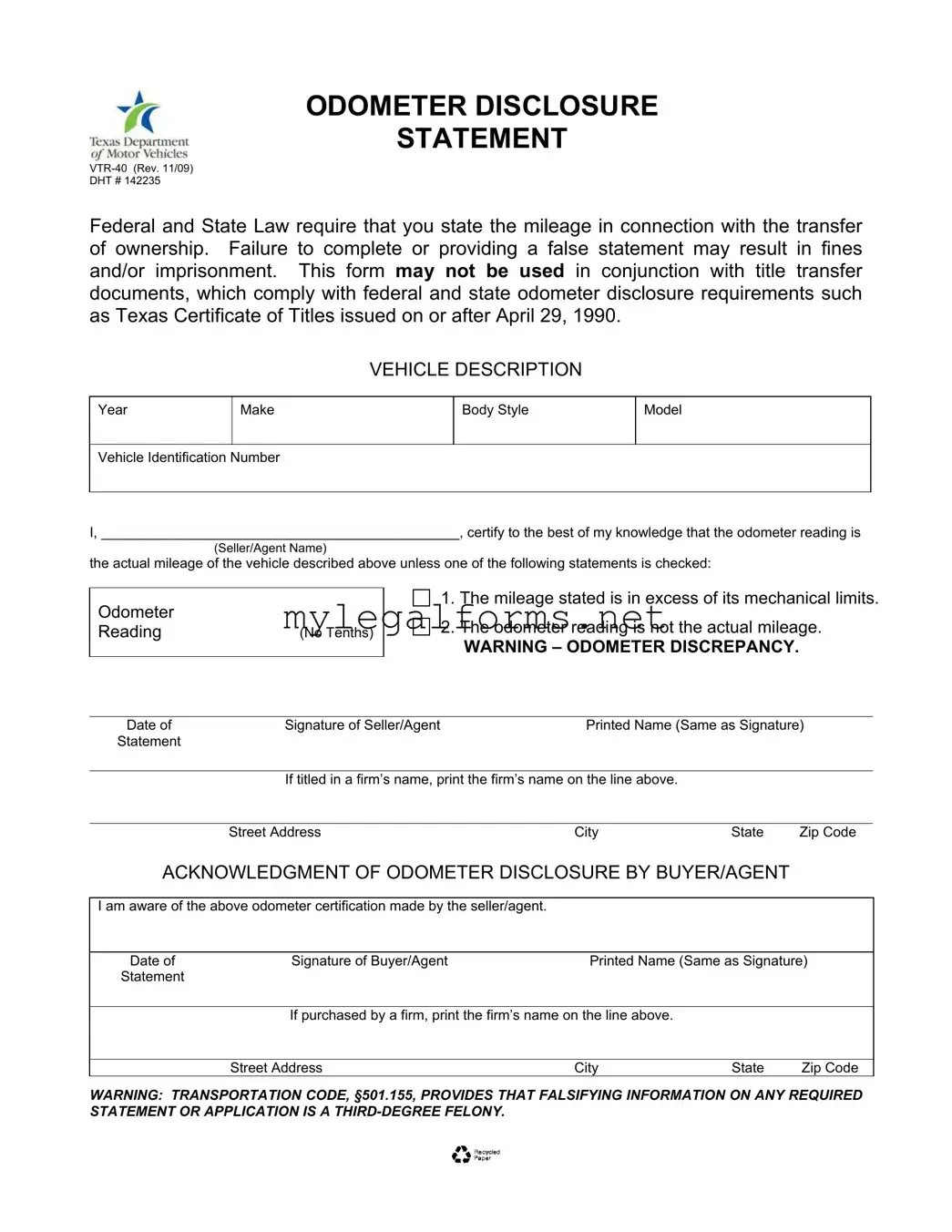Filling out the Texas Odometer Statement form can seem straightforward, but many individuals make common mistakes that can lead to serious consequences. One major error is failing to provide the correct vehicle identification number (VIN). The VIN is crucial for identifying the vehicle and ensuring that the odometer reading corresponds to the correct car. Without it, the form may be deemed incomplete.
Another frequent mistake is neglecting to accurately record the odometer reading. It's important to ensure that the mileage is entered without tenths. Rounding or guessing can lead to discrepancies that raise red flags during the transfer process. Always double-check the reading to avoid any potential issues.
Some individuals overlook the requirement to check one of the statements regarding the odometer reading. If the mileage is not accurate or exceeds mechanical limits, it’s essential to indicate this clearly. Failing to do so can lead to legal repercussions, as it may be interpreted as providing false information.
Additionally, many people forget to sign the form. The signature of the seller or agent is necessary to validate the odometer disclosure. Without it, the form may not be accepted during the transfer of ownership, leading to delays or complications.
Providing an incorrect date is another common error. The date of signing must reflect when the odometer statement was completed. An incorrect date can create confusion and may be seen as an attempt to mislead or manipulate the information.
Another mistake is not including the printed name of the seller or agent, which should match the signature. This step is crucial for ensuring that the form is properly attributed to the individual completing it. Omitting this detail can lead to questions about the legitimacy of the transaction.
Some individuals mistakenly think they can use this form alongside title transfer documents. However, the Texas Odometer Statement must stand alone and cannot be combined with other forms. This misunderstanding can cause unnecessary complications during the transfer process.
Inaccurate or incomplete addresses are also a common issue. The street address, city, state, and zip code of both the seller and buyer must be provided. Missing or incorrect information can hinder communication and lead to potential legal issues.
Lastly, individuals often underestimate the importance of understanding the legal implications of falsifying information. The warning on the form clearly states that providing false information can result in severe penalties. Being aware of these consequences can help motivate individuals to take the process seriously and ensure accuracy.
By being mindful of these common mistakes, individuals can navigate the Texas Odometer Statement form with greater confidence and ensure a smoother transfer of vehicle ownership.

